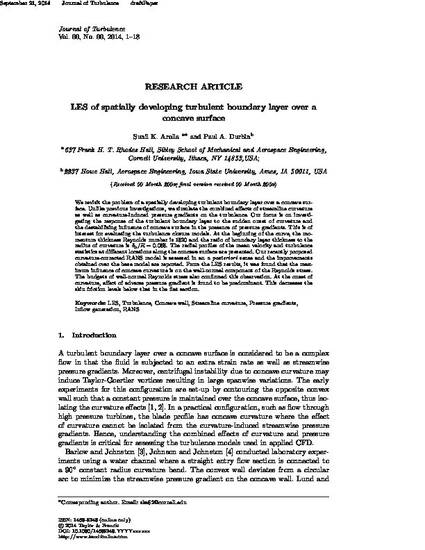
Article
Modeling rotation and curvature effects within scalar eddy viscosity model framework
International Journal of Heat and Fluid Flow
Document Type
Article
Disciplines
Publication Version
Submitted Manuscript
Publication Date
2-1-2013
DOI
10.1016/j.ijheatfluidflow.2012.11.006
Abstract
Two approaches to incorporate the effects of rotation and curvature in scalar eddy viscosity models are explored. One is the “Modified coefficients approach” – to parameterize the model coefficients such that the growth rate of turbulent kinetic energy is suppressed or enhanced. The other is the “Bifurcation approach” – to parameterize the eddy viscosity coefficient such that the equilibrium solution bifurcates from healthy to decaying solution branches. Simple, yet, predictive models in each of these two approaches are proposed and validated on some benchmark test cases characterized by profound effects of system rotation and/or streamline curvature. The results obtained with both the models are encouraging.
Copyright Owner
Elsevier Inc.
Copyright Date
2012
Language
en
File Format
application/pdf
Citation Information
Paul A. Durbin and Sunil K. Arolla. "Modeling rotation and curvature effects within scalar eddy viscosity model framework" International Journal of Heat and Fluid Flow Vol. 39 (2013) p. 78 - 89 Available at: http://works.bepress.com/paul_durbin/19/

This article is published as Arolla, Sunil K., and Paul A. Durbin. "Modeling rotation and curvature effects within scalar eddy viscosity model framework." International Journal of Heat and Fluid Flow 39 (2013): 78-89. 10.1016/j.ijheatfluidflow.2012.11.006. Posted with permission.